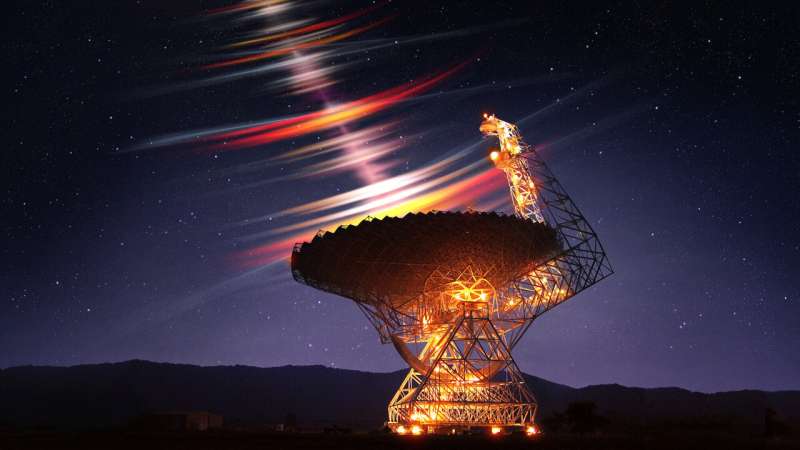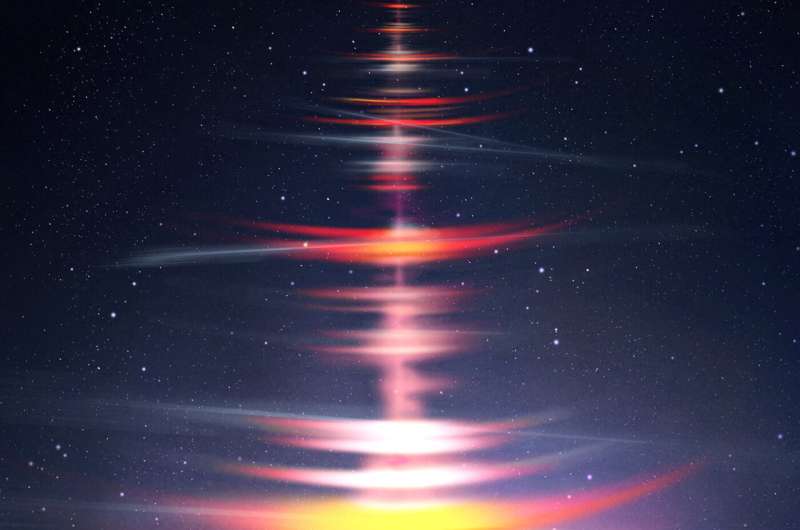This article has been reviewed according to Science X's editorial process and policies. Editors have highlighted the following attributes while ensuring the content's credibility:
fact-checked
peer-reviewed publication
trusted source
proofread
Astronomers comb telescope archive and find microsecond-duration burst

An international team of researchers led by Dutch Ph.D. candidate Mark Snelders (ASTRON and University of Amsterdam) has discovered radio pulses from the distant universe that last only millionths of a second. They found these microsecond bursts after a meticulous examination of archival data from a known millisecond source. It's unclear how the ultrafast bursts are created.
The researchers published their findings in Nature Astronomy.
Fast radio bursts (FRBs) are unpredictable, extremely short flashes of radio waves far beyond our Milky Way. They are possibly caused by magnetic neutron stars, also known as magnetars. The first bursts were discovered in 2007. So far, most bursts last longer than a thousandth of a second and emit as much energy as our sun generates in a day.
In 2022, researchers at the University of Amsterdam and ASTRON hypothesized that there might be bursts that would last not thousandths, but only millionths of a second. "During our group meetings, we often talked about it," says Mark Snelders, Ph.D. candidate at ASTRON and the University of Amsterdam (the Netherlands), and in charge of the research that uncovered the ultra-fast radio bursts. "By coincidence, I found out that there was a public dataset that we could use for this."
Five hours of data
The Dutch researchers used a public archive from Breakthrough Listen, a project designed to search for extraterrestrial life. That archive, originating from the Green Bank Telescope (United States), contained five hours of data from the known repeating fast radio burst FRB 20121102A located some three billion light years away toward the constellation of Auriga.

The data is somewhat comparable to a movie. The researchers divided each second of the first thirty minutes of data into half a million individual images. Next, they used software filters and machine learning to search for outliers. In this way, they discovered eight ultra-fast bursts that lasted only ten millionths of a second or less.
Now that the first ultra-fast microsecond source has been detected, researchers expect to find more such sources. However, finding them may be easier said than done, as some data files are not detailed enough to cut into half a million pieces per second.
Ultimately, the researchers want to use the bursts to create a kind of map of the space between stars and galaxies. With such a map, they can better understand how galaxies are being fed by the surrounding gas.
More information: M.P. Snelders et al, Detection of ultra-fast radio bursts from FRB 20121102A, Nature Astronomy (2023). DOI: 10.1038/s41550-023-02101-x, www.nature.com/articles/s41550-023-02101-x . On arXiv: DOI: 10.48550/arxiv.2307.02303
Journal information: arXiv , Nature Astronomy
Provided by Netherlands Research School for Astronomy





















